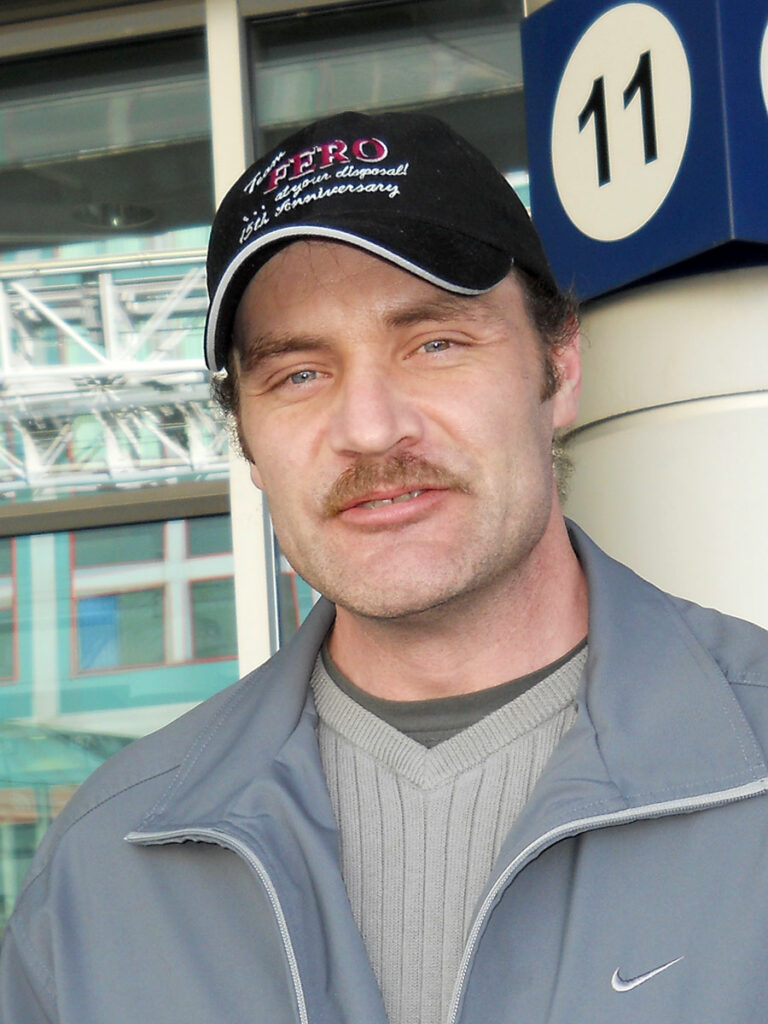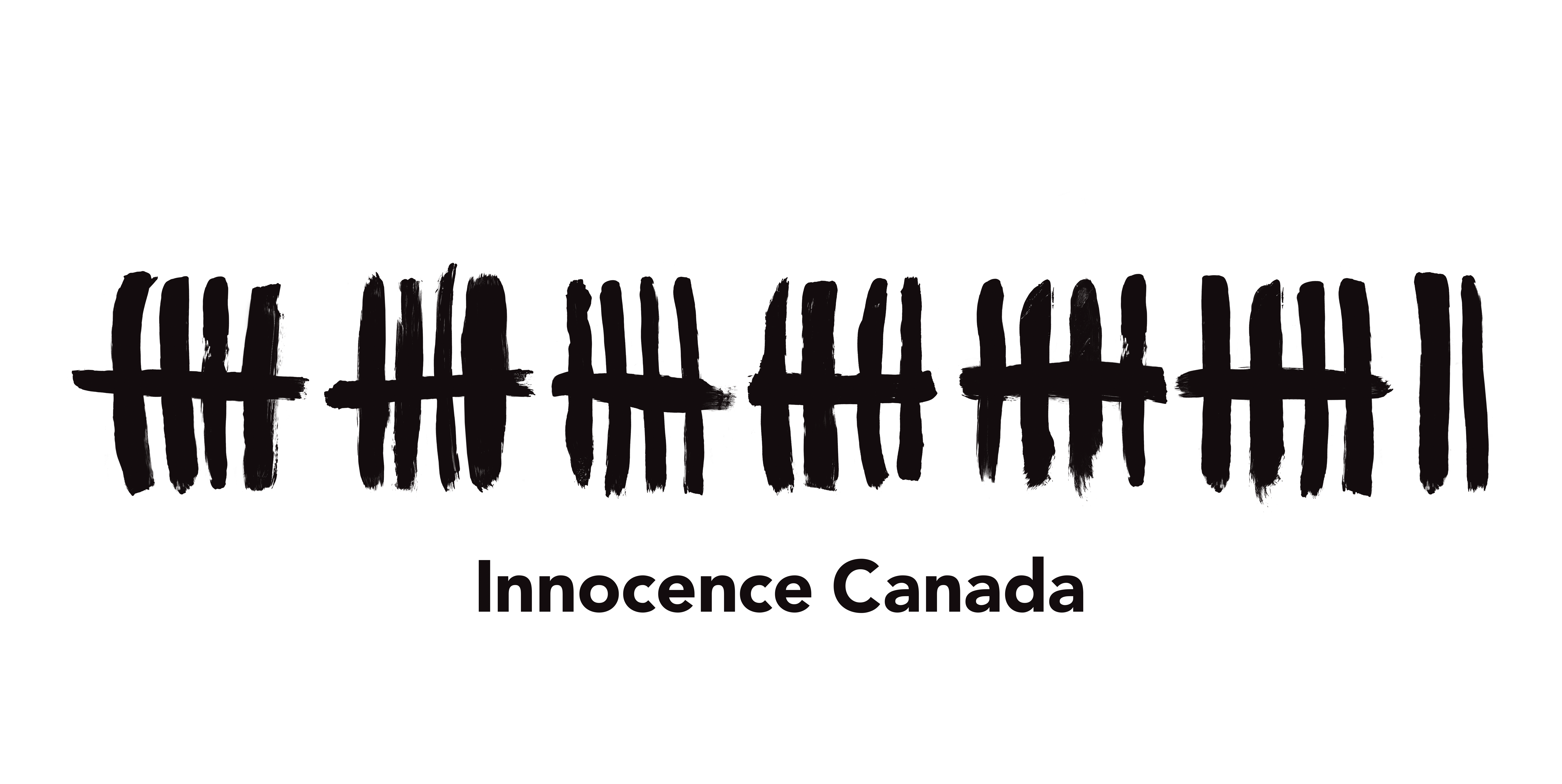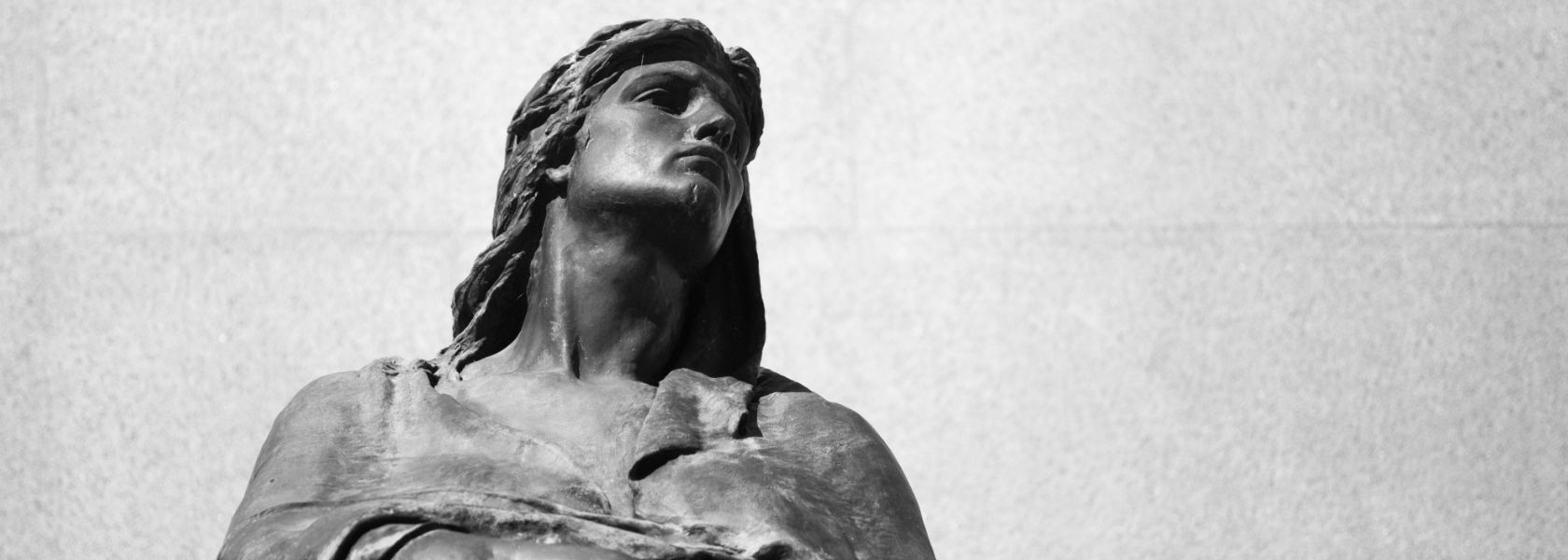Richard Brant
Author: Sarah Harland-Logan
Introduction
On November 17, 1992, nineteen-year-old Richard Brant, of Belleville, Ontario, was out for a walk with Dustin, his infant son. Richard was very proud to be a new father and looked forward to raising Dustin with his girlfriend, Mary Farrell. When he ran into his cousin, Richard excitedly lifted up the hood on Dustin’s baby carriage to introduce the two. He was horrified to find that Dustin was motionless in the carriage, with red foam around his nose. Richard and his cousin immediately rushed Dustin to a nearby restaurant and called 911. Dustin was briefly revived at the hospital, but the doctors soon told Richard and Mary the devastating news that their baby was not going to survive. Dustin passed away on November 18, only nine weeks after his birth.[1]
A nearby police officer had happened to observe Richard’s initial, horrified reaction when he saw that Dustin was not moving. This officer thought that Richard was indeed both surprised and upset.[2] However, the police who investigated Dustin’s death took a different view.
Dustin’s Autopsy
Dustin’s autopsy was performed at the Kingston General Hospital, by Dr. Sukrita Nag, a Professor of Neuropathology. Dr. Nag concluded that Dustin had died due to complications from pneumonia, which made sense to Richard, since Dustin had been suffering from an upper respiratory infection shortly before his death.[3] However, the police investigators still believed that Richard had killed his son, despite the complete absence of any evidence to support this theory. They requested a second opinion from the now infamous Charles Smith, who was then regarded as Ontario’s leading pediatric forensic pathologist.[4]
Smith reached a very different conclusion from that of Dr. Nag. In his report of April 15, 1993, Smith stated that Dustin exhibited the classic symptoms of Shaken Baby Syndrome, and that Richard’s shaking his son had led to Dustin’s death. Smith arrogantly claimed that Dr. Nag’s autopsy report should be “filed in the garbage can.”[5]
Smith felt comfortable submitting this report even though he had not examined Dustin’s brain – which is absolutely crucial to making this diagnosis – since it had already decomposed owing to the fact morgue staff had accidentally left it in a container of water.[6]
On April 22, 1993, Richard was arrested and charged with manslaughter.[7]
Richard’s Plea Bargain
Richard knew that he was innocent; but he also knew that he would face a stiff sentence if he were found guilty of manslaughter. Charles Smith would be the prosecution’s star witness, and Richard’s lawyer had told him that Smith was viewed as “the king” of his field. His compelling testimony could easily lead to a conviction, and Richard could spend up to fifteen years in jail.[8] In addition, Richard and Mary had separated, unable to bear the tragedy of Dustin’s death together; and Richard’s new partner, Lynne, was expecting a baby. Having just lost his first child, he could not bear the thought of not being part of this new baby’s life.[9]
However, Richard had another option. After his preliminary hearing – where he had realized just “how much trouble … [he] was in” – the Crown prosecutor offered him a plea bargain. If Richard agreed to plead guilty to aggravated assault, then he could expect to spend only six to nine months in jail. Richard’s lawyer urged him to accept this offer. Richard agonized over what to do.[10]
On April 21, 1995, Richard pled guilty to aggravated assault. He was sentenced to six months in prison.[11] After his release, Richard was ostracized by members of his community, who believed that he had killed his newborn baby. Richard soon moved to Montreal, and then to Moncton, hoping to start a new life.[12]
Pleading guilty to a crime he did not commit was the hardest decision of Richard’s life. Years later, he would file an affidavit – part of his effort to clear his name – in which he explained that “I did nothing to cause Dustin’s death and I still grieve for him. I never did anything to hurt my son…. I did not cause Dustin’s death or assault him in any way, and pled guilty because I felt I had no other realistic option.”[13]
Flawed Medical Evidence
For over a decade after his conviction, Richard tried to put this horrific chapter behind him, unaware that Charles Smith’s vaunted reputation had started to crumble. Innocence Canada’s (formerly AIDWYC) work on the Bill Mullins-Johnson case had raised serious doubts about Smith’s findings, and Innocence Canada was growing suspicious of Smith’s conclusions in other cases as well. In April 2005, Innocence Canada wrote to Dr. Barry McLellan – then the Chief Coroner for Ontario – and Michael Bryant – then the Attorney General – urging a full public inquiry into Smith’s work.[14]
On June 7, 2005, Dr. McLellan announced in a press release that a formal review would be conducted into Smith’s work on 45 cases involving suspicious deaths of children.[15] One of these cases was Dustin’s. This inquiry, led by Justice Stephen Goudge, resulted in the publication of the Inquiry into Pediatric Forensic Pathology in Ontario.[16]
The reviewer assigned to Dustin’s case was a forensic neuropathologist, Dr. Whitwell.[17] She concluded – and several other experts later agreed – that there was no evidence to support Smith’s finding that Richard had hurt Dustin. Dr. Whitwell stated that since Dustin’s brain had not been preserved properly, there should have been no finding as to his cause of death. She did note, however, that pneumonia might indeed have played a role, as Dr. Nag had originally found.[18]
In May of 2007, Richard was surprised to hear from Innocence Canada lawyer James Lockyer, who informed him that Dustin’s case had been reviewed and that the experts agreed that there was no evidence suggesting that Richard had harmed his son. Richard realized that “suddenly, … [his] vindication was possible and the truth about Dustin’s death might come out.”[19]
A Miscarriage of Justice
The Ontario Court of Appeal granted Richard leave to reopen his case in January of 2009. Since it had become clear to everyone that Smith’s incorrect report had led to the conviction of an innocent man, Richard’s Innocence Canada lawyers and Crown prosecutor Alison Wheeler jointly requested that the court acquit him.[20]
On May 4, 2011, the Court of Appeal complied with this request, setting aside Richard’s guilty plea and entering an acquittal.[21] The Court set out three factors that had played a key role in their decision. First, the medical community’s view of Shaken Baby Syndrome had changed considerably since Richard’s conviction in 1995. Second, Smith had been “unfairly critical” of Dr. Nag’s work, and further found that “the loss of important tissue sample…should have had a significant impact on … [Smith’s] diagnosis.” Third, new expert evidence provided two other possible explanations for Dustin’s death, specifically “idiopathic cardiorespiratory arrest” (a heart attack of unknown cause) or a “blood clot in the cerebral sinus” (which is a channel that normally drains blood from the brain).[22]
After court, Richard told reporters that now he could hold his head high, with “no more doubt.” “The truth always comes out,” he explained; “I waited and” – 16 years after his conviction – “it finally came.”[23]
Causes of Richard’s Wrongful Conviction
The principal cause of Richard’s wrongful conviction was disgraced ex-pathologist Charles Smith’s baseless claim that Richard had caused Dustin’s death by shaking him. The results of the Goudge Inquiry definitively destroyed Smith’s once-stellar reputation. This comprehensive report found that Smith had no training in forensic pathology – the field in which he was trained was pediatric pathology – which led to many misdiagnoses such as that made in Dustin’s case.[24] Moreover, Smith was a terrible expert witness who often “provided unbalanced or emotive testimony, which tended to invite inappropriate and adverse conclusions.”[25] Smith was eventually stripped of his medical license.[26]
Of course, another cause of Richard’s wrongful conviction was that he chose to plead guilty even though he knew that he had done nothing wrong. Although plea bargains are an important part of the justice system – they allow cases to move through the courts efficiently and often provide a good resolution for everyone – it is important that prosecutors only make plea agreements that are fair to the accused. The current version of the Crown Policy Manual followed by Ontario prosecutors specifies that “Crown counsel must not accept a guilty plea to a charge knowing that the accused is innocent,” or when part of the alleged offence could never be proven in court.[27]
That said, there is no suggestion that the prosecutor who offered Richard his plea deal acted improperly. Everyone believed that Charles Smith’s opinion was extremely reliable.
The Wounds that Innocence Canada Cannot Heal
“Destroyed” seems to be the word of choice to describe the impact of Richard’s wrongful conviction. After his acquittal, Richard explained that although a great weight had been lifted off his shoulders, “This just destroyed me.”[28] Or, as Mary, Dustin’s mother put it, “I knew he was innocent from day one, and I knew that they destroyed our lives and our family.”[29] She recalled how police treated them like criminals, though they were “loving young parents.”[30]
When reporters asked him about Charles Smith, Richard understandably responded that “He ruined a lot of people’s lives. And I think he needs to go and see what it’s like inside jail ’cause he’s the one that put a lot of people there.”[31] Smith’s report that cost Richard so much was “not a little wee mistake,” after all, but rather “a life mistake”: one that pertains to “lives he’s destroyed.”[32]
[1] See R v Brant, [2011] OJ No 2062 at para 1, 2011 ONCA 362 [Brant]; “Affidavit of Richard Brant” (filed in the Ontario Court of Appeal), paras 5 and 11, accessed at The Charles Smith Blog: http://smithforensic.blogspot.ca/2011/05/richard-brant-charles-smith-case-his.html [“Affidavit”]; Michele Mandel, Toronto Sun: “Another Charles Smith Tale of Horror.” April 29, 2011, http://www.torontosun.com/2011/04/29/another-charles-smith-tale-of-horror [“Tale of Horror”]; Win Wahrer, “Richard Brant: Father Vindicated,” June 2011 AIDWYC Quarterly, p. 1 [“Vindicated”].
[2] Tracey Tyler, The Star: “Conviction Quashed in Case Involving Disgraced Pathologist Charles Smith.” May 4, 2011, http://www.thestar.com/news/ontario/2011/05/04/conviction_quashed_in_case_involving_disgraced_pathologist_charles_smith.html[“Conviction Quashed”].
[3] “Affidavit,” supra note 1 at paras 6, 12; “Vindicated,” supra note 1 at p. 2; CBC News. “Father in Disgraced Pathologist Case Acquitted.” May 4, 2011, www.cbc.ca/news/canada/toronto/father-in-disgraced-pathologist-case-acquitted-1.1010766 [“Father Acquitted”].
[4] “Affidavit,” supra note 1 at para 12; “Vindicated,” supra note 1 at p. 2; “Conviction Quashed,” supra note 2.
[5] “Vindicated,” supra note 1 at p. 2; see also “Tale of Horror,” supra note 1.
[6] “Vindicated,” supra note 1 at p. 2; Jill Mahoney and Tenille Bonoguore, The Globe and Mail: “14 Cases Tainted by Charles Smith’s Evidence.” August 10, 2010, http://www.theglobeandmail.com/news/national/14-cases-tainted-by-charles-smiths-evidence/article562711/?page=all [“14 Cases Tainted”]; Waney Squier, “The ‘Shaken Baby’ Syndrome: Pathology and Mechanisms” (2011) 122 Acta Neuropathologica 519.
[7] “Affidavit,” supra note 1 at para 14; Brant, supra note 1.
[8] Brant, supra note 1; “Conviction Quashed,” supra note 2; “Affidavit,” supra note 1 at paras 13, 16, 18.
[9] “Father Acquitted,” supra note 3; “Vindicated,” supra note 1 at p. 2.
[10] “Affidavit,” supra note 1 at para 17.
[11] Ibid at para 20; Brant, supra note 1.
[12] “Conviction Quashed,” supra note 2.
[13] “Affidavit,” supra note 1 at paras 1, 23.
[14] Inquiry into Pediatric Forensic Pathology in Ontario Report (the Honorable Stephen T. Goudge, Commissioner), Volume 2: Systemic Review (2008) at 32, online: http://www.attorneygeneral.jus.gov.on.ca/inquiries/goudge/report/index.html [“Goudge Inquiry”].
[15] The Honourable Stephen T. Goudge, Commissioner. “Volume 2: Systematic Review,” Inquiry into Pediatric Forensic Pathology in Ontario. September 30, 2008, available at http://www.attorneygeneral.jus.gov.on.ca/inquiries/goudge/index.html (p 68).
[16] Available at http://www.attorneygeneral.jus.gov.on.ca/inquiries/goudge/index.html
[17] Ibid at p 32.
[18] Brant, supra note 1 at para 3; “Vindicated,” supra note 1 at p. 2.
[19] “Affidavit,” supra note 1 at para 21.
[20] “Father Acquitted,” supra note 3; “14 Cases Tainted,” supra note 6.
[21] Brant, supra note 1 at para 3.
[22] Ibid at para 2.
[23] “Father Acquitted,” supra note 3.
[24] Ibid at p 41.
[25] Ibid.
[26] CTV.ca News Staff, “Disgraced pathologist stripped of medical licence.” February 1, 2011,http://www.ctvnews.ca/disgraced-pathologist-stripped-of-medical-licence-1.602739.
[27] “Resolution Discussions,” March 21, 2005, Crown Policy Manual. Available at: http://www.attorneygeneral.jus.gov.on.ca/english/crim/cpm/2005/ResolutionDiscussions.pdf.
[28] “Conviction Quashed,” supra note 2.
[29] “Father Acquitted,” (embedded video), supra note 3.
[30] “Conviction Quashed,” supra note 2.
[31] “Father Acquitted,” supra note 3.
[32] “Conviction Quashed,” supra note 2.


